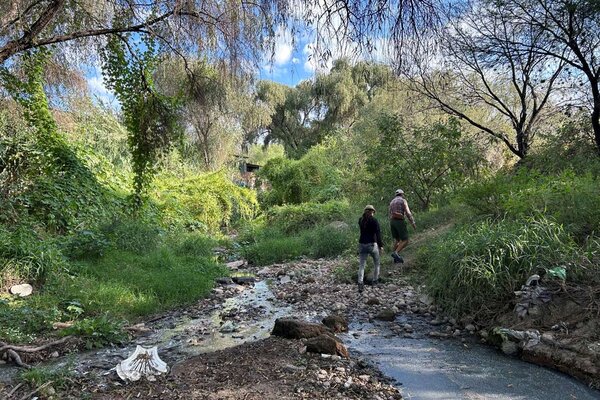
Top U.S. scientists join U of S food security research
Plant molecular and cell biologist Byung-Kook Ham joined the Global Institute for Food Security and the Department of Biology
Flagship programs at the University of Saskatchewan (U of S) are helping to create a cluster of expertise in world-class plant breeding and attract top researchers.
Two scientists recruited from major American universities by renowned plant scientist Leon Kochian for his $20-million CERC in Food Systems and Security research program are the latest to join the U of S, through the Excellence Research Chairs (CERC) and Canada First Research Excellence Fund (CFREF) programs.
“I am delighted we were able to recruit two world-class scientists to work in our CERC program on Food Systems and Security,” said Kochian. “They each bring unique multidisciplinary talents to the program, enabling us to integrate computer science and big data analytics with plant molecular and cell biology research to better understand how crop plants adapt to and thrive in less than optimal settings.”
Plant molecular and cell biologist Byung-Kook (Brian) Ham joined the U of S from the University of California Davis, where he was an associate project scientist. All he knew about the U of S was that it is a good university for agriculture and plant science, and that the Global Institute for Food Security (GIFS) was located on campus.
“I didn’t know how really great it is,” he said. “During my interview I found out that excellent colleagues and amazing facilities for plant science are housed in GIFS and the university. It was way above my expectations. That’s why I decided to join GIFS and the U of S for my future research.”
Ham is now research chair in plant molecular long-distance signalling at GIFS and assistant professor in the biology department.
He is working at the new Roots of Food Security laboratory established by Kochian in GIFS, currently housed in the National Research Council building on campus. Ham’s research interest is how plants communicate between their root system and “shoot tissues” such as leaves and flowers, through the plant vascular system.
The vascular system transports water and dissolved minerals to the leaves, and photosynthetic nutrients from mature leaves to all developing parts of the plant. But Ham has helped show that the system transports much more than sugars, water and nutrients.
When plants are grown in mineral nutrient-limited conditions, their root system undergoes adaptive responses, informing the shoots about the nutrient limitation. In return, the shoots send signals to the roots to reprogram them, leading to changes in root architecture and function to enhance the uptake of the limiting nutrient. These root-shoot communication signals play an important role in reprogramming plant growth processes for nutrient acquisition and redistribution.
Ham’s research goal is to identify how the molecules involved in the signalling work to integrate root and shoot growth under stress conditions, and how this information can be used to develop plants with more efficient and effective root systems that enable the production of sustainable crop yields under non-optimal soil conditions.
Meanwhile computational biologist Dave Schneider has joined the U of S from Cornell University in Ithaca, N.Y., as the GIFS chair in digital and computational agriculture. He is a professor in the U of S School of Environment and Sustainability, where he is graduate chair.
“I live in an interesting research world made possible by having learned the languages of multiple disciplines—chemistry, physics, applied mathematics, computer science and several dialects of biology,” he said.
With an undergraduate degree in biochemistry, he did graduate work in chemical physics at Cornell before going into computer science at IBM, University of Illinois and then Cornell. When Cornell began its genomics initiative in the late 1990s, he was able to help biologists and computer scientists exchange and integrate ideas because he understood the “language” of both camps.
“It has been my niche since then,” said Schneider. “Leon recruited me to serve that catalytic role in being able to work with all the biologists here who are doing traditional molecular biology in addition to high-throughput genomics studies.”
As well, Schneider is involved with image analysis to characterize root system architecture and serves as the interface between the worlds of physics and engineering with his background in chemical physics.
“Leon is trying to create an environment where students are being mentored not just in biology but also in the computational and statistical methods needed to understand the meaning of the experiments they conduct,” he said. “It’s training the students and post-doctoral fellows to be more self-sufficient in a way not being done elsewhere.”
For the highly multidisciplinary work being done with his CERC, Kochian is negotiating with a plant molecular and quantitative geneticist to join the U of S and is advertising to hire an assistant professor in engineering to work on digital imaging of root growth and development.
He foresees up to 15 post-doctoral fellows and up to 15 graduate students eventually training in the laboratory.


